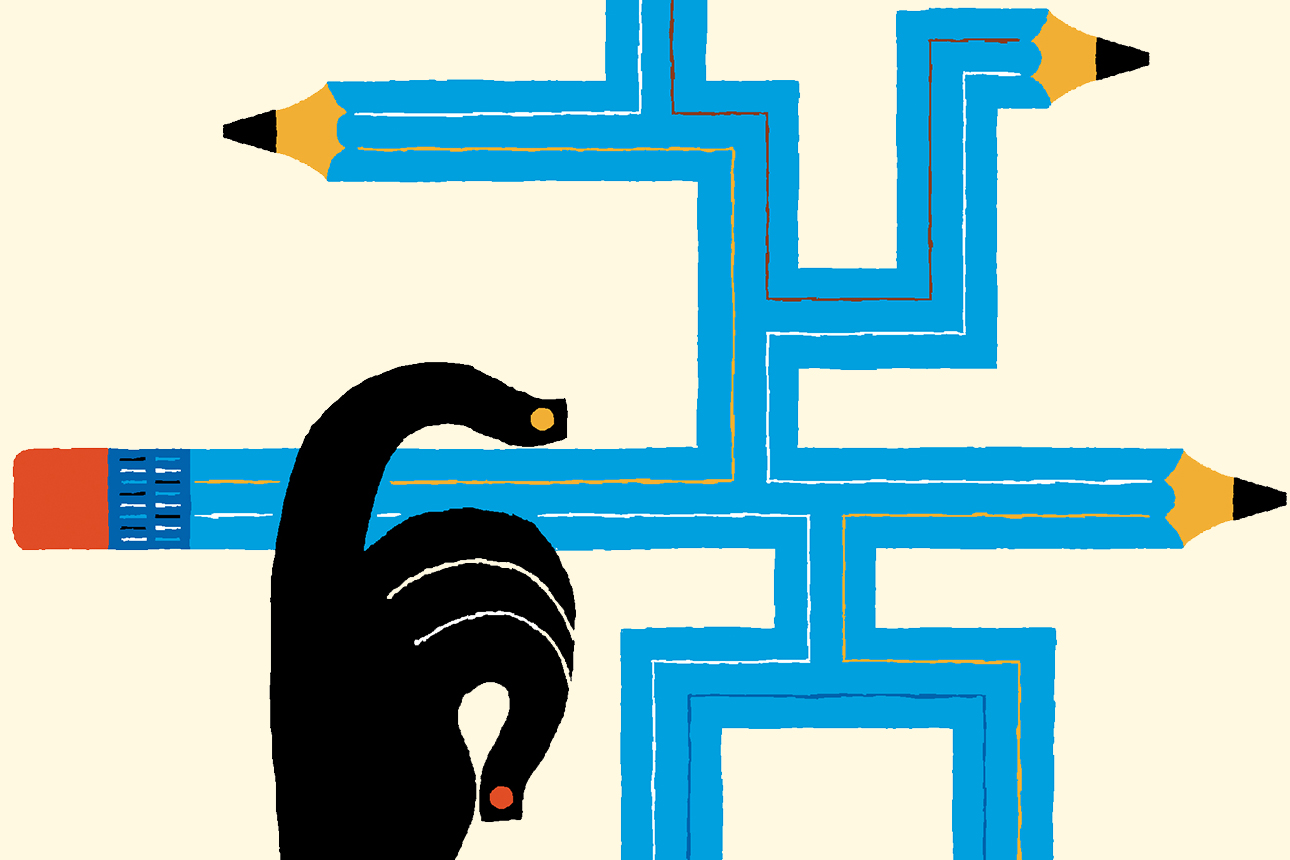Plotting Strategy in a Dynamic World
Companies can no longer rely on traditional forecasting exercises to spot — and capitalize on — emerging threats and opportunities.

Image courtesy of Adam McCauley/theispot.com
To remain competitive over time, a company must be able to move quickly in response to major changes in society, technology, competition, regulation, labor markets, and myriad other areas. Yet the possibility of such changes creates deep uncertainty, making it challenging to identify the most profitable path forward. Although organizations can never be fully prepared for an unanticipated shock, the most resilient ones learn to expect the unexpected, rebound quickly when it occurs, and take advantage of unforeseen opportunities that emerge.
To help with those efforts, we have developed a framework that goes beyond traditional forecasting and risk-assessment exercises. It consists of four sets of activities: First, develop a comprehensive set of processes to actively sense new insights (whether internal or external) that could affect the business, and hence identify threats or opportunities as early as possible. Second, organize in response to those threats or opportunities; this is likely to involve reallocating resources, revamping processes, filling capability gaps, and aligning the company’s structure and governance. Third, capture value by revising business models and restructuring relationships with other players in various ecosystems. And fourth, renew the organizational capabilities needed to create and capture value by continuing to monitor and assess results and making small adjustments over time — while also preparing for the major disruptions that require a more comprehensive overhaul.
Get Updates on Transformative Leadership
Evidence-based resources that can help you lead your team more effectively, delivered to your inbox monthly.
Please enter a valid email address
Thank you for signing up
This approach is based on the principle of dynamic capabilities, which holds that companies need to continually adapt their resources to respond to rapidly changing and unpredictable environments. Dynamic-capabilities-based models are the subject of a large and growing body of strategic management literature.1 Our framework synthesizes key lessons from this literature and provides a way forward for managers to revitalize their company’s processes, structures, and business models — and to compete effectively — in a highly dynamic business environment.
The Shifting Innovation Economy
A few decades ago, companies could build a strong business model and apply it more or less unchanged for years. In that era, resilience was based on stability and competitive barriers to entry. Consider that, in the early 1970s, nearly 80% of the most profitable publicly traded companies remained in the top quartile of performance for at least six years out of the previous 10.
References
1. For instance, see G. Albort-Morant, A.L. Leal-Rodríguez, V. Fernández-Rodríguez, et al., “Assessing the Origins, Evolution, and Prospects of the Literature on Dynamic Capabilities: A Bibliometric Analysis,” European Research on Management and Business Economics 24, no. 1 (January-April 2018): 42-52.
2. M. Reeves, K. Whitaker, and T. Deegan, “Fighting the Gravity of Average Performance,” MIT Sloan Management Review, Jan. 9, 2020, https://sloanreview.mit.edu.
3. F. Becker, “Organizational Ecology and Knowledge Networks,” California Management Review 49, no. 2 (winter 2007): 42-61.
4. R. Ramírez, R. Österman, and D. Grönquist, “Scenarios and Early Warnings as Dynamic Capabilities to Frame Managerial Attention,” Technological Forecasting and Social Change 80, no. 4 (May 2013): 825-838; and A. Dong, M. Garbuio, and D. Lovallo, “Generative Sensing: A Design Perspective on the Microfoundations of Sensing Capabilities,” California Management Review 58, no. 4 (summer 2016): 97-117.
5. T. Griffith, “Reimagining Mobility: A CEO’s Guide,” McKinsey Quarterly, Feb. 25, 2019, www.mckinsey.com; see also “Progressive Insurance: Fast Experimentation and Low Risk With Hadoop,” Tableau, accessed May 28, 2020, www.tableau.com.
6. The Samsung case is compiled from various news articles and other sources. Significant sources include D. Rocks and M. Ihlwan, “Samsung Design,” BusinessWeek, Dec. 6, 2004, 88-96; Y. Yoo and K. Kim, “How Samsung Became a Design Powerhouse,” Harvard Business Review 93, no. 9 (September 2015): 73-78; and J. Song, K. Lee, and T. Khanna, “Dynamic Capabilities at Samsung: Optimizing Internal Co-opetition,” California Management Review 58, no. 4 (summer 2016): 118-140.
7. M.Y. Lee and A.C. Edmondson, “Self-Managing Organizations: Exploring the Limits of Less-Hierarchical Organizing,” Research in Organizational Behavior 37 (January 2017): 35-58.
8. E. Danneels and A. Vestal, “Normalizing vs. Analyzing: Drawing the Lessons From Failure to Enhance Firm Innovativeness,” Journal of Business Venturing 35, no. 1 (January 2020): 1-18.
9. C.J. Nemeth, “Managing Innovation: When Less Is More,” California Management Review 40, no. 1 (fall 1997): 59-74.
10. The key concept is the bottleneck asset — any input that is scarce and costly (or impossible) to replicate. See, for instance, D.J. Teece, “Profiting From Innovation in the Digital Economy: Enabling Technologies, Standards, and Licensing Models in the Wireless World,” Research Policy 47, no. 8 (October 2018): 1367-1387. A competitively supplied input may nonetheless be worth producing in-house if its evolution needs to be closely coordinated with that of other inputs. See J.M. de Figueiredo and D.J. Teece, “Mitigating Procurement Hazards in the Context of Innovation,” Industrial and Corporate Change 5, no. 2 (June 1996): 537-559.
11. For an analysis of the dimensions of corporate identity, and the tensions that can arise between them, see J.M.T. Balmer and S.A. Greyser, “Managing the Multiple Identities of the Corporation,” California Management Review 44, no. 3 (spring 2002): 72-86. For a literature review of the triggers of identity change, see R. Abratt and M. Mingione, “Corporate Identity, Strategy, and Change,” Journal of Brand Management 24, no. 2 (January 2017): 129-139.
12. W.C. Taylor, “The Leader of the Future,” Fast Company, June 1999, 130-138.
13. This involves the classic exercise of “double-loop learning that confronts the basic assumptions behind ideas or present views and that publicly tests hypotheses,” as described on p. 34 in C. Argyris, “Leadership, Learning, and Changing the Status Quo,” Organizational Dynamics 4, no. 3 (winter 1976): 29-43.

Comment (1)
Clement GAVI